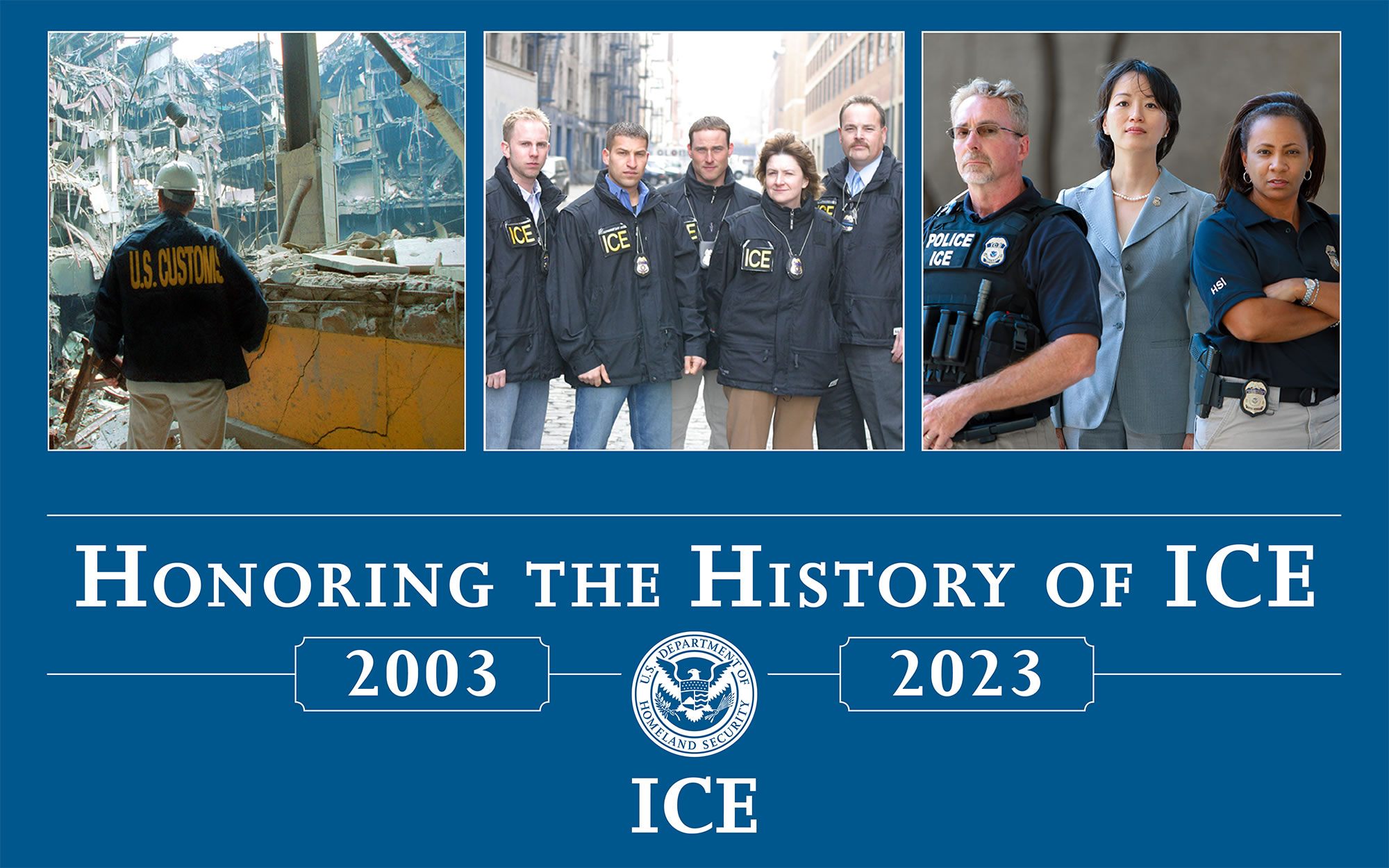
It’s a story that began in our nation’s earliest days…
As the Department of Homeland Security’s 20th anniversary approaches, we celebrate U.S. Immigration and Customs Enforcement’s history.
Though DHS is a 20-year-old agency, its story began with laws passed in our nation’s earliest days.
The Tariff Act of 1789 was the first major piece of legislation enacted in the United States after the Founding Fathers ratified the Constitution. It had two purposes: to protect newly developed manufacturing industries and raise revenue for our fledgling federal government, which was struggling with debt left over from the American Revolution.
That act laid the foundation for many laws related to imports, customs and taxes over the next 213 years.
Then, in November 2002, Congress passed the Homeland Security Act. The act set into motion the largest government reorganization since lawmakers created the Department of Defense in the 1940s.
In March 2003, the newly created DHS opened its doors. One of its components was the Bureau of Immigration and Customs Enforcement, which is now known as U.S. Immigration and Customs Enforcement.
In response to the 9/11 tragedy, lawmakers gave ICE a unique combination of civil and criminal authorities to protect national security and strengthen public safety. With those authorities, ICE quickly became a powerful and sophisticated federal law enforcement agency.
Throughout 2023, ICE is looking back at its history and achievements through a series of stories and images, focusing on significant milestones, events and accomplishments, beginning in 2001. Click on a calendar year to learn more about significant events that happened during ICE’s history.

September 11: 19 terrorists hijack commercial airliners and carry out massive attack on the United States

Terrorists take advantage of security weaknesses in the United States’ aviation system and kill nearly 3,000 innocent men, women and children, including citizens of more than 90 countries. It is the deadliest terrorist attack ever committed on American soil.
2002

November: Lawmakers pass the Homeland Security Act
Legislators pass the Homeland Security Act of 2002 in response to 9/11 and the subsequent series of anthrax-laced letters sent to senators and news organizations. The act is co-sponsored by 118 members of Congress, and President George W. Bush signs it into law Nov. 25. The Homeland Security Act creates the U.S. Department of Homeland Security and a new cabinet-level position: the Secretary of Homeland Security.
2003

March 1: The U.S. Department of Homeland Security officially begins operations

DHS absorbs all or part of 22 federal agencies and programs, including the Immigration and Naturalization Service and the U.S. Customs Service. In doing so, it divides the enforcement and services functions of the two agencies and creates three new agencies: the Bureau of Customs and Border Protection, the Bureau of Citizenship and Immigration Services and the Bureau of Immigration and Customs Enforcement.
DHS is tasked to:
- Prevent terrorism and enhance national security
- Secure and manage U.S. borders
- Enforce and administer U.S. immigration law
- Safeguard and secure cyberspace
- Ensure resilience in disaster response
March 11: President Bush appoints Michael J. Garcia as the first assistant secretary for the Bureau of Immigration and Customs Enforcement

President Bush appoints Michael J. Garcia as the first assistant secretary for the Bureau of Immigration and Customs Enforcement with unanimous consent from the Senate. Garcia previously served as acting INS commissioner. Prior to that, Garcia was the assistant secretary of commerce for export enforcement and served as the top enforcer of dual-use export control laws.
Highlights
- Office of Detention and Removal Operations establishes the first eight Fugitive Operations Teams. They arrest 1,900 unlawfully present noncitizens.
- Office of Detention and Removal Operations officers apprehend five of the agency’s most wanted noncitizens in less than a month.
- The first class of special agents graduates.
- The Office of Investigations launches Cornerstone, an outreach initiative to identify vulnerabilities in financial systems used for money laundering.
- The Office of Investigations launches Operation Predator, an initiative to protect children by targeting child pornographers, child sex tourists and people involved in all levels of child sexual abuse materials.
- The agency launches a tipline to support Operation Predator.
- The Office of the Principal Legal Advisor secures a removal order against Juan Emilio Aboy, a known Cuban spy.
2004

Highlights
- The National Fugitive Operations Program adds 10 additional Fugitive Operations Teams, bringing the total to 18.
- The agency establishes the Alternatives to Detention Program, which blends technology and case management to increase compliance with release conditions while allowing noncitizens to remain in their communities.
- The Northern Virginia Internet Crimes Against Children Task Force moves into the Cyber Crimes Center.
2005

Highlights
- The agency becomes a board member and the primary U.S. law enforcement representative of the Virtual Global Taskforce, an international alliance of law enforcement agencies and private industry partners working together to combat online child sexual abuse.
- The National Fugitive Operations Program adds 26 additional Fugitive Operations Teams, bringing the total to 44. They arrest 7,959 unlawfully present noncitizens.
- The Office of Investigations and U.S. Department of State begin conducting cross-border financial investigation training events around the world.
- The Border Enforcement Security Task Force is created.
- Atlanta’s Office of the Principal Legal Advisor secures the case for removal of Kelbessa Negewo, who fraudulently obtained asylum, permanent residency and naturalization in the United States. Negewo was wanted in his home country for human rights violations, including torture and murder, during Ethiopia’s “Red Terror” campaign in the late 1970s.
- The agency launches Operation Community Shield after field offices identify Mara Salvatrucha (MS-13) as one of the largest and most violent street gangs in the country.
- Human Trafficking is the first television program about a Bureau of Immigration and Customs Enforcement agent to premiere on TV in the United States and Canada. The TV miniseries features an ICE agent who goes undercover to stop an organization from human trafficking.
2006

January 4: Julie L. Myers becomes assistant secretary for Bureau of Immigration and Customs Enforcement
President George Bush appoints Julie L. Myers as assistant secretary for the Bureau of Immigration and Customs Enforcement. Prior to her appointment, Myers served as special assistant to the president for presidential personnel. Before that, she served as assistant secretary for export enforcement at the Department of Commerce. In that role, Myers supervised a nationwide law enforcement agency that specialized in civil and criminal export control violations.
Highlights
- Office of Detention and Removal Operations initiates the Detention Enforcement and Processing of Offenders by Remote Technology Center in Chicago. It becomes the interview and processing site for convicted criminal noncitizens incarcerated by the Federal Bureau of Prisons.
- The agency establishes the Fugitive Operations Support Center to enhance the National Fugitive Operations Program’s efficiency and effectiveness.
- The agency initiates a new alternative to detention: the Electronic Monitoring Program.
- The 287(g) program allows state and local law enforcement entities to enter partnerships with ICE to perform immigration law enforcement functions.
- The Office of the Principal Legal Advisor provides 40 hours of customs law training to all its offices.
- Operation Wagon Train launches. It’s one of the largest worksite enforcement operations in U.S. history.
2007

January 29: Majid Al-Massari removed
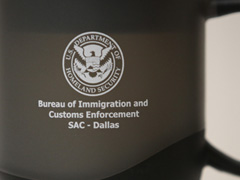
Agents remove Majid Al-Massari, 35, a native and citizen of Saudi Arabia belonging to an undesignated terrorist organization, pursuant to a removal order from June 30, 2005. At the time of his arrest, Al-Massari was a Seattle-area computer security specialist using his cyber skills to engage in terrorist activities, incite hatred, and advance the Committee for the Defense of Legitimate Rights’ terrorist goals. Al-Massari moderated an internet chatroom for the group and posted Al Qaeda's weekly magazine on his site.
March 31: Bureau of Immigration and Customs Enforcement renamed U.S. Immigration and Customs Enforcement
The U.S. Department of Homeland Security changes the Bureau of Immigration and Customs Enforcement's name to U.S. Immigration and Customs Enforcement. It also changes the Bureau of Customs and Border Protection’s name to U.S. Customs and Border Protection.
June 1: Office of Detention and Removal Operations assumes responsibility for the Criminal Alien Program
The Office of Detention and Removal Operations assumes responsibility for the Criminal Alien Program, taking over for the Office of Investigations. ICE aims to secure final orders of removal for criminal noncitizens before they are released from prison or jail. This decreases or eliminates the time noncitizens spend in ICE custody, reducing the government’s costs.
September 1: ICE implements electronic travel document system
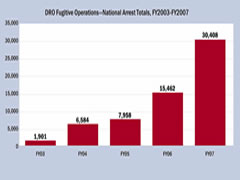
ICE launches a new electronic travel document system, which significantly reduces the amount of time partner countries need to spend on issuing travel documents. The system enables officials to review travel document requests and electronically issue travel documents.
October 1: The National Fugitive Operations Program drastically reduces the nation’s fugitive noncitizen population
ICE's case backlog consists of fewer than 595,000 fugitive noncitizens — a 38,000-person decrease from the prior year. ICE attributes the dramatic reduction to the Fugitive Operations Program’s rapid growth.
December: Value of counterfeit or pirated merchandize seizures increases by more than 20% over prior year
Although the number of ICE’s intellectual property seizures dropped from 14,675 in 2006 to 13,657 in 2007, the total value of those seizures increased from $155,369,236 to $196,754,377.
2008

July 16: The National Intellectual Property Rights Coordination Center opens in Virginia
DHS opens a high-tech facility to house the ICE-led Intellectual Property Rights Coordination Center. The move co-locates, for the first time, the regulators and law enforcement agencies working to stop the theft of intellectual property and the importation of counterfeit, substandard and tainted products. The IPR Center's early partners include U.S. Customs and Border Protection, the Department of Commerce, the Food and Drug Administration, the FBI and the U.S. Postal Inspection Service.
November: ICE opens new headquarters
ICE moves to a new headquarters building, Potomac Center North, in Southwest Washington, D.C. The new building gives the growing agency the space and resources it needs to fulfill its expanding mission.
Highlights
- The Criminal Alien Program initiates its Violent Criminal Alien Section to act on violations of criminal immigration law that the Office of Detention and Removal Operations discovers through its enforcement activities.
- Secure Communities, an initiative to modernize identification and removal processes, plans its first activations.
- ICE signs a memorandum of understanding with Vietnam allowing for the repatriation of Vietnamese citizens who entered the United States on or after July 12, 1995.
- The Office of the Principal Legal Advisor facilitates the creation of the ICE Suspension and Debarment Program.
- An ICE investigation leads to the conviction of Chuckie Taylor, an American citizen and the son of former Liberian president Charles Taylor. Officials charged him with five counts of torture; conspiracy to torture; and two federal firearms offenses for his role in the torture and murder of several victims in Liberia during his father’s regime.
- ICE’s Operation Devil Horns leads to indictments for 22 individuals in the San Francisco Bay Area on federal racketeering and other charges arising from their participation in the MS-13 gang.
2009

May 12: John T. Morton is appointed ICE assistant secretary
The Senate unanimously confirms John Morton as ICE’s assistant secretary. Prior to his presidential appointment, Morton spent 15 years at the Department of Justice, where he served as assistant United States attorney, counsel to the deputy attorney general, and acting deputy assistant attorney general of the criminal division. His title will change to director in July 2010.
Highlights
- Secure Communities activates its first jurisdiction in Harris County, Texas.
- The Office of Detention and Removal Operations removes John Demjanjuk, a former Nazi death camp guard, to Germany through a court order of removal the U.S. Department of Justice obtained.
- The National Bulk Cash Smuggling Center is established in Vermont.
- The Cyber Crimes Center launches Operation Delego, which dismantles an international pedophile ring that operated an invitation-only internet site named Dreamboard.
- The Computer Forensic Program institutes a hard drive repair program for situations where the retrieval of digital evidence would otherwise be impossible.
- The Victim Assistance Program establishes the Forensic Interview Program to support investigations involving child exploitation and human trafficking victims and witnesses.
- ICE removes Khalid Al-Jawary to Sudan after attorneys from the Office of the Principal Legal Advisor successfully prosecute him. Al-Jawary attempted to blow up three buildings in the United States with large car bombs.
2010

June: ICE renames its two largest directorates
ICE renames the Office of Detention and Removal Operations to Enforcement and Removal Operations and renames the Office of Investigations to Homeland Security Investigations. Then-Director John T. Morton says ICE will be better able to fulfill its mission if it’s aligned around its two core operational responsibilities: criminal investigations and civil immigration enforcement.
Highlights
- The Workforce Management Division puts the Office of Investigations, the Office of Intelligence and the Office of International Affairs under Homeland Security Investigations.
- ICE forms the Management and Administration directorate.
- The agency establishes its On-Site Detention Monitoring Unit in response to Director Morton’s initiative to enhance oversight and care of detainees in ICE custody.
- ICE launches its Online Detainee Locator System, a public, Internet-based tool designed to assist family members, attorneys and other interested parties in locating detained aliens in ICE custody.
- The HSI-led IPR Center launches Operation In Our Sites, an initiative aimed at combating internet counterfeiting and piracy.
- The HSI-led Operation Pacific Rim, which targeted a major drug trafficking organization, results in 24 indictments and seizures of more than $174 million in cash, 3.8 tons of cocaine and $179 million in property.
- The Office of the Principal Legal Advisor successfully prosecutes and removes Marko Boskic, a Bosnian Croat soldier who participated in the murders of more than 1,000 Muslim men and boys outside Srebrenica in July 1995.
2011

Highlights
- ERO launches Operation Cross Check, a large-scale operation targeting convicted criminal noncitizens, and arrests 5,343 people.
- ERO’s Phoenix and El Paso offices begin collaborating with U.S. Customs and Border Protection on the Alien Transfer and Exit Program. Officials subsequently remove 36,587 people.
- HSI-led Project Southern Tempest leads to the arrest of the 20,000th gang member since the inception of Operation Community Shield.
- Tyson Foods is the first major food company to become a full member of the ICE Mutual Agreement between Government and Employers, or IMAGE, program.
- ICE launches its Personnel Recovery Unit to guide ICE employees and their families on emergency planning while overseas.
- The Cyber Crimes Center launches the Victim Identification Program as part of its Child Exploitation Investigations Unit.
- HSI’s Tactical and Wireless Communications Program obtains the first of three Mobile Command Center vehicles designed to support communications during large-scale operations, contingencies and natural disaster call-outs.
- Attorneys with the Office of the Principal Legal Advisor help review and revise ICE’s existing Performance-Based National Detention Standards to address sexual abuse and assault.
2012

Highlights
- ICE establishes the Criminal Alien Removal Initiative, which adds 25 more Fugitive Operations Teams to the National Fugitive Operations Program and brings the total number of teams to 129.
- Fugitive Operations Teams make a total of 37,371 arrests, their largest total of criminal arrests in a single year.
- ICE opens its first civil detention facility in Karnes, Texas, marking a major milestone in the agency’s longtime efforts in immigration detention reform.
- HSI’s Forensic Laboratory earns accreditation through the American Society of Crime Laboratory Directors Laboratory Accreditation Board.
- The Cyber Crimes Center launches Operation Sunflower to identify and rescue victims, and to arrest and prosecute abusers and others engaged in the possession, distribution and production of child sexual abuse material.
- ICE is appointed the chair of the Virtual Global Taskforce.
- HSI Technical Operations builds a new high-tech facility with a new technical operations surveillance network that provides greater reliability in support of investigations worldwide.
- The Visa Security Program screens approximately 1.3 million visa applications worldwide.
- The Office of the Principal Legal Advisor completes a review of more than 400,000 cases and approximately 13,000 appellate cases for eligibility for the exercise of prosecutorial discretion.
2013

March: 10th anniversary of U.S. Immigration and Customs Enforcement recognized by President Barack Obama

President Barack Obama recognizes DHS and its component agencies’ 10th anniversary in a presidential proclamation, calling on all Americans to recognize the department for improving the nation’s readiness and resilience.
September 11: ICE launches smartphone app to locate predators, rescue children from sexual abuse and exploitation

HSI launches a new smartphone app — the first of its kind in U.S. federal law enforcement — designed to seek the public's help with fugitive and unknown suspect child predators.
October: Veteran "HEROs" join ICE efforts to bring child predators to justice

Acting Secretary of Homeland Security Rand Beers joins ICE Acting Director John Sandweg, U.S. Special Operations Command’s Care Coalition Director Kevin McDonnell and the National Association to Protect Children’s Executive Director Grier Weeks in a swearing-in ceremony for 17 veterans — many of whom were wounded in the line of duty — as part of the Human Exploitation Rescue Operative Child Rescue Corps’ inaugural class.
2014

January: Federal agencies seize more than $21.6 million in fake NFL merchandise during Operation Team Player

Federal officials team with the NFL to announce the record-breaking results of a nationwide law enforcement effort combating counterfeit sports merchandise.
March 14: DHS secretary appoints Thomas S. Winkowski as principal deputy assistant secretary
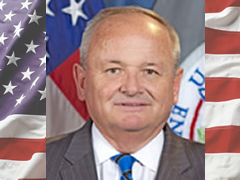
Secretary of Homeland Security Jeh Johnson appoints Thomas S. Winkowski as ICE’s principal deputy assistant secretary. Prior to assuming responsibility for ICE, Winkowski held a series of leadership positions during nearly four decades with U.S. Customs and Border Protection and its predecessor agencies, including acting commissioner.
March 24: ICE launches national cyber safety campaign to help protect kids from online sexual predators

HSI partners with the National Center for Missing & Exploited Children to launch Project iGuardian, a first-of-its-kind national cyber safety campaign.
June: Officers arrest 22 in New Mexico for operating international car theft ring connected to Sinaloa drug cartel

ICE arrests 22 people in New Mexico during the takedown of a major international auto theft and drug trafficking ring with ties to the Sinaloa drug cartel. Those arrested face charges for their alleged roles in a large-scale car theft scheme that shipped stolen luxury vehicles from New Mexico to Mexico in exchange for methamphetamine and heroin.
September: ICE expands reach of smartphone app designed to locate child predators and rescue their victims
ICE releases an Android version of the Operation Predator app and releases Spanish versions for both Android and iOS apps. The app provides additional resources and information about HSI and its global partners in the fight against child exploitation.
ICE arrests 19 fugitives during Operation No Safe Haven
ICE arrests 19 fugitives for known or suspected human rights violations during a first-of-its-kind, nationwide operation. During the operation, ICE's National Fugitive Operations Program works with the ICE Human Rights Violators and War Crimes Center, arresting foreign nationals with outstanding removal orders who are subject to repatriation to their countries of origin. Of the 19 known or suspected human rights violators arrested during Operation No Safe Haven, eight individuals are also convicted criminal noncitizens.
Large-scale law enforcement effort targets downtown Los Angeles businesses linked to money laundering for drug cartels
Approximately 1,000 law enforcement officials fan out across LA’s Fashion District and execute dozens of search and arrest warrants linked to businesses suspected of using black market peso exchange schemes to launder narcotics proceeds for international drug cartels. During the enforcement actions, authorities arrest nine defendants and seized an estimated $65 million in cash and bank deposits.
October: ICE arrests 62 criminal noncitizens and immigration law violators in Texas
ERO officers arrest 62 criminal noncitizens, fugitives and other immigration violators in Central and South Texas during a three-day, multi-city enforcement operation.
December 23: Sarah R. Saldaña is sworn in as ICE’s fourth director
Sarah R. Saldaña is sworn in as ICE’s fourth director. Prior to assuming responsibility for ICE, she served as the United States attorney for the Northern District of Texas. In that position, she led a staff of more than 200 employees, including approximately 100 attorneys.
2015

March: ICE arrests 2,059 convicted criminals in nationwide operation
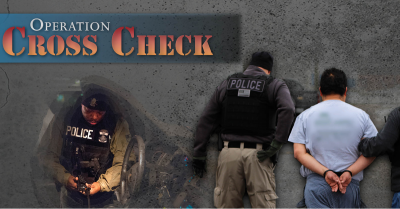
ERO officials arrest 2,059 convicted criminals in Operation Cross Check between March 1 and March 5. Hundreds of officers participate in the operation targeting public safety threats. Those arrested are from 94 countries and have a wide array of criminal convictions.
ICE arrests wanted child predator following public tip

HSI arrests William Akers in Raleigh, North Carolina, after a tipster tells investigators that Akers works in a Raleigh company’s IT department. Within hours, HSI Raleigh special agents confirm his identity and arrest him.
ERO arrests its 200th criminal noncitizen convicted of sex crime under Sex Offender Registration Initiative
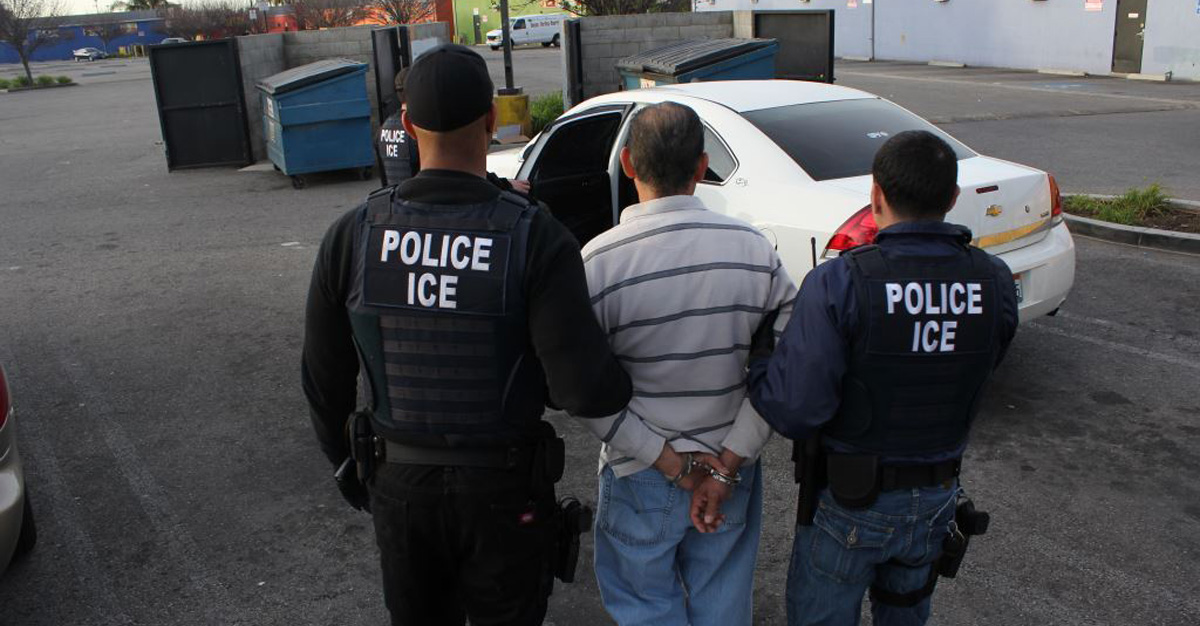
ERO’s Sex Offender Registration Initiative, which started in 2013, results in the arrest of 200 criminal noncitizens convicted of sex crimes.
April: ICE arrests 976 gang members and associates during Project Wildfire surge

HSI arrests nearly 1,000 gang members and associates from 239 gangs in 282 cities across the U.S. during a six-week operation dubbed Project Wildfire.
August 14: ERO arrests one of its most wanted fugitives in Virginia
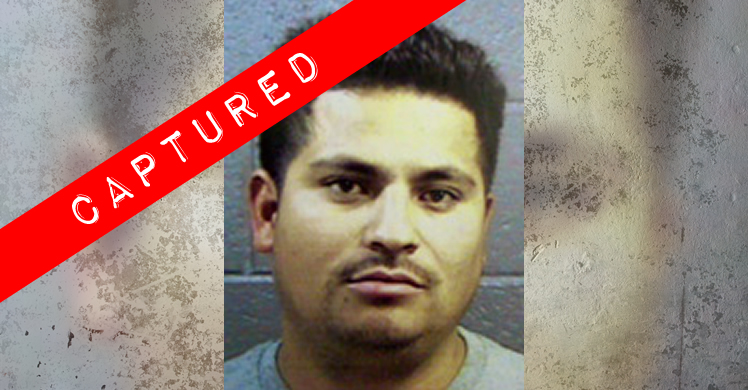
ERO arrests El Salvador citizen Walter Antonio Larios-Hernandez, a convicted sex offender, in Norfolk. Larios-Hernandez was convicted in New Mexico of criminal sexual penetration of a child in 2003 and had separate convictions in Virginia, including a conviction for driving under the influence in 2007. ERO added Larios-Hernandez to the Most Wanted Fugitives list in March 2015 after he eluded capture during a nationwide ERO operation targeting criminal noncitizens.
October: Feds shutter highly sophisticated smuggling tunnel south of San Diego

Federal agents with the San Diego Tunnel Task Force and Mexican authorities shut down one of the longest and most sophisticated smuggling tunnels ever discovered along the U.S.-Mexico border, seizing 12 tons of marijuana and arresting 22 suspects. The lighted tunnel extends the length of approximately eight football fields and features ventilation and a rail cart transportation system. It stretches from a warehouse in Tijuana to a building in San Diego’s Otay Mesa industrial park.
November 6: West Michigan fugitives surrender after being profiled on ICE's app to locate accused child predators

ICE arrests Normann Pittelkow and Nicole Jacob, who absconded during a federal child pornography investigation; they surrendered after being added to the Operation Predator app.
2016

March: ICE arrests 1,133 in operation targeting gangs
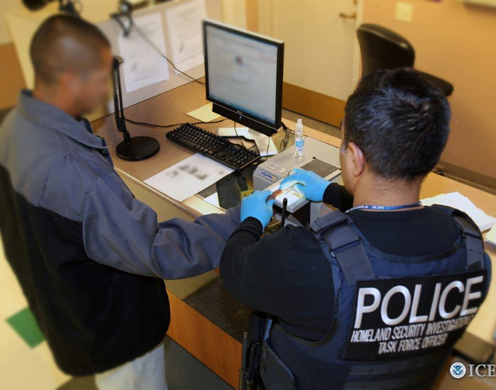
ICE arrests 1,133 people during HSI’s five-week operation dubbed Project Shadowfire, including more than 900 transnational criminal gang members and others associated with transnational criminal activity such as drug trafficking, human smuggling and sex trafficking, murder and racketeering.
April: HSI investigation leads to charges for 21 people involved in a fake “pay-to-stay” New Jersey college

Officials arrest 21 brokers, recruiters and employers who allegedly conspired with more than a thousand foreign nationals to fraudulently maintain student and foreign worker visas through a “pay-to-stay” New Jersey college.
June: ICE, U.S. Marshals arrest 45 international fugitives with Interpol Red Notices
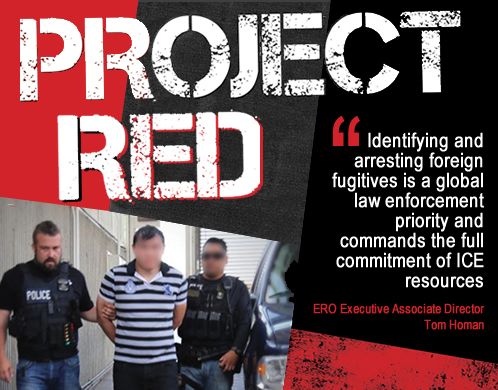
ERO arrests 45 foreign fugitives — all subjects of active Interpol Red Notices for connections to criminal activity — during Project Red II. Red Notices are international wanted notices and provides fugitive identification information on people convicted of serious crimes who have fled prosecution or criminal penalties. Those in ERO custody are wanted for crimes in 22 different countries in Europe, Asia, Latin America and the Middle East; 16 are wanted on various fraud charges; seven for homicide; and four for illegal gang activity. Some are also accused of drug trafficking, rape, embezzlement, extortion and kidnapping.
September: ICE commemorates 15th Anniversary of 9/11
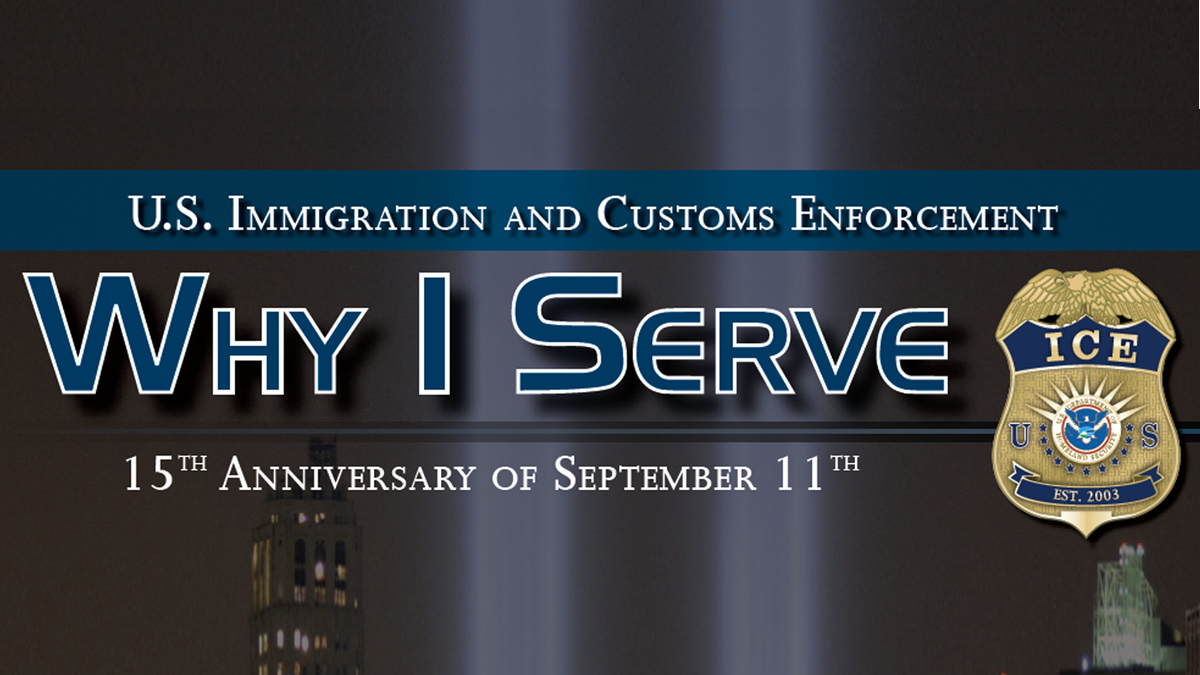
ICE shares personal accounts of employees’ experiences on 9/11 as part of its “Why I Serve” campaign. For many, preventing another terror attack on American soil is a driving factor in their civil service careers.
October: ICE investigation results in 17 sex trafficking indictments in Minnesota

A federal indictment charges 17 members of an international sex trafficking organization with transporting hundreds of female sex slaves from Thailand and trafficking them throughout the United States.
December: ICE announces that it arrested more than 400 international fugitives in FY 2016
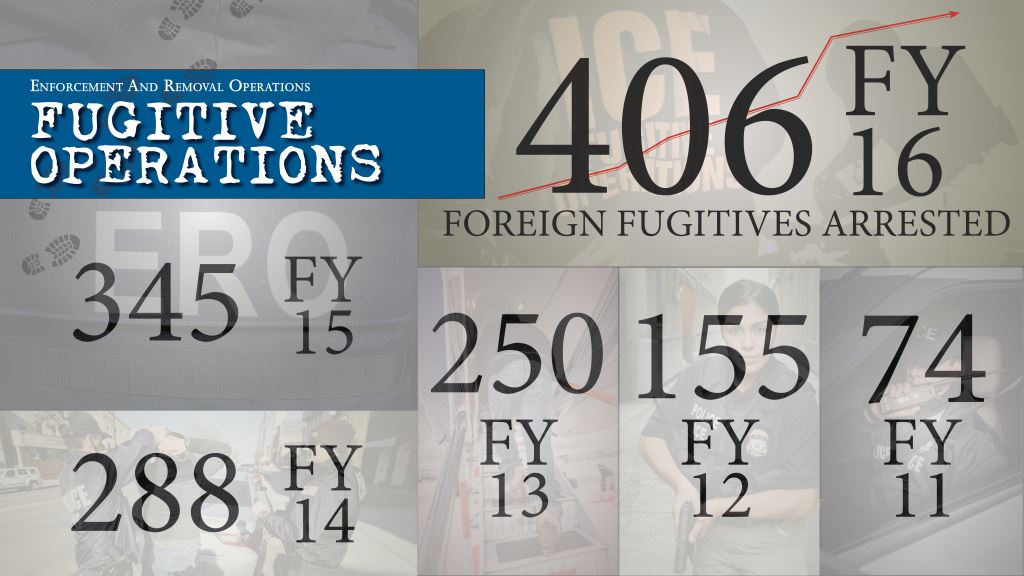
ICE announces that HSI’s National Fugitive Operations Program arrested 406 foreign fugitives during the previous fiscal year. Over five years, that number quadrupled.
2017

January: ICE announces that it arrested nearly 2,000 human traffickers and identified more than 400 victims in 2016

ICE announces that in FY 2016, HSI arrested 1,952 individuals for human trafficking and identified 400 trafficking victims; the directorate also offered victims critical services. The announcement comes during the seventh National Slavery and Trafficking Month, which ICE typically marks with several human trafficking awareness events.
February: ERO captures one of its most wanted fugitives in New Jersey

ERO Newark Fugitive Operations Team officers arrest one of ERO's most wanted fugitives, Javier Atlixqueno-Vaquero. Atlixqueno-Vaquero was previously convicted of sexual assault with a minor, felony sale of hallucinogen/narcotic controlled substance, and felony failure to appear.
2018

March: Operation Matador nets 24 transnational gang members, 475 total arrests
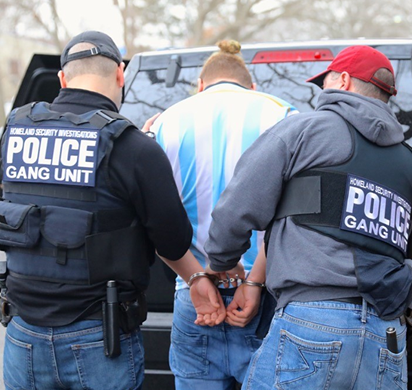
ICE arrests 24 transnational gang members under Operation Matador, an intelligence-driven, unified effort to combat the MS-13 and other transnational gangs’ proliferation in Long Island, bringing the number of people arrested under this initiative to 475.
June: HSI New York operation leads to arrests of 3 dozen darknet vendors and massive seizures
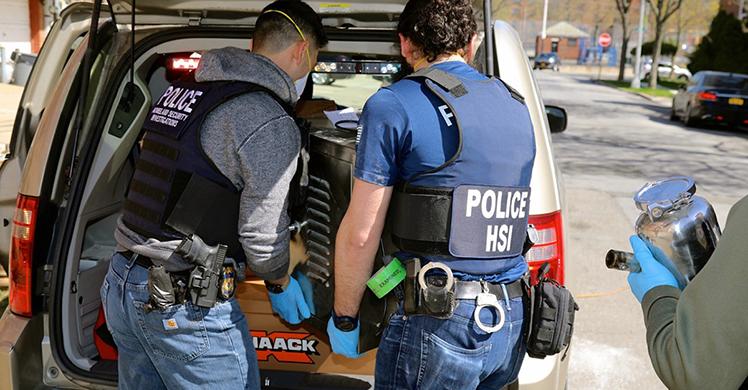
HSI New York conducts an unprecedented joint operation to infiltrate and destabilize U.S.-based darknet vendors operating across multiple markets around the country. It executes 70 search warrants and arrests 35 people; it also seizes five vehicles, more than $3.6 million in currency and gold bars, and nearly 2,000 Bitcoin.
ICE and DOJ return Christopher Columbus letter to Spain
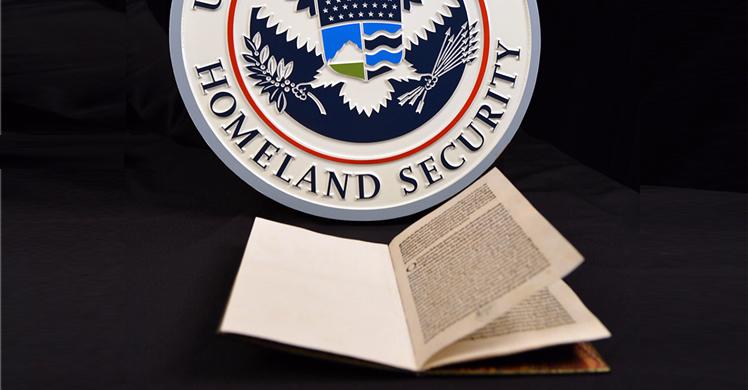
HSI and U.S. Attorney's Office for the District of Delaware return a more than 500-year-old copy of Christopher Columbus’ letter describing his discoveries in the Americas to the Vatican during a repatriation ceremony at the Biblioteca Apostolica Vaticana — the Vatican Library — in Vatican City.
ICE removes Salvadoran MS-13 affiliate and Irish national
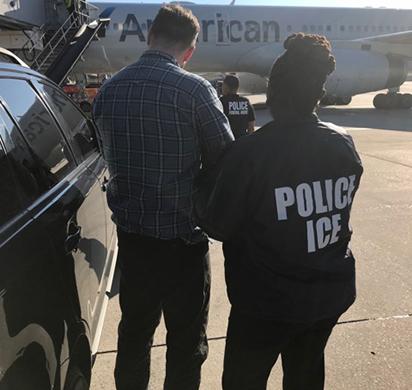
ERO officers remove Andrew Wall, an Irish national and member of the organized crime syndicate the Cock-Wall Gang, and Frank Adonay Gonzalez Valdez, a Salvadoran national with MS-13 affiliations.
July: HSI El Paso, Border Patrol agents arrest smugglers and unlawfully present noncitizens; seize cash, vehicles, drugs
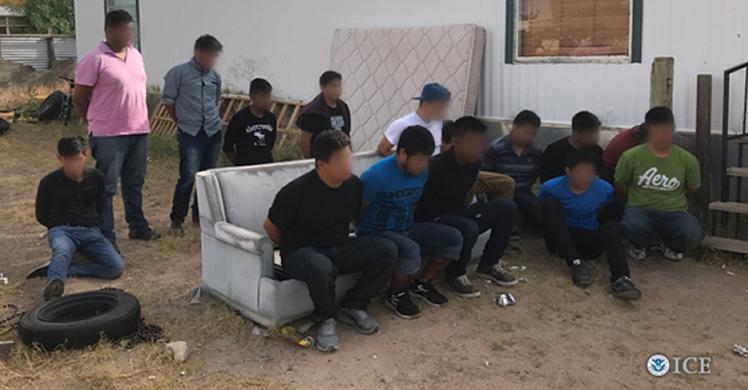
HSI and agents with U.S. Border Patrol assigned to the Border Enforcement Security Task Force arrest 18 noncitizen smugglers and 117 people residing in the country unlawfully. They also seize cash, vehicles and more than 1,000 pounds of marijuana in Southern New Mexico and El Paso, Texas.
HSI delivers more than 5,200 I-9 audit notices

HSI announces that it’s delivered thousands of I-9 audit notices to businesses nationwide as part of a seven-month, two-phase operation. These notices inform business owners that ICE will audit their hiring records to ensure employees have work authorization.
ERO removes former Nazi labor camp guard Jakiw Palij to Germany
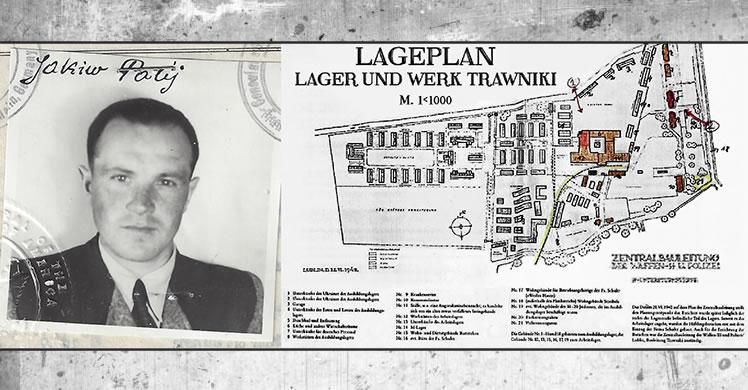
ERO, with support from the Human Rights Violators and War Crimes Center and ICE’s Office of the Principal Legal Advisor, removes Jakiw Palij, a former Nazi labor camp guard in German-occupied Poland and a postwar resident of Queens, New York. ICE removed Palij based on a 2004 order of removal.
ICE arrests 32 sex offenders in Long Island during Operation SOAR
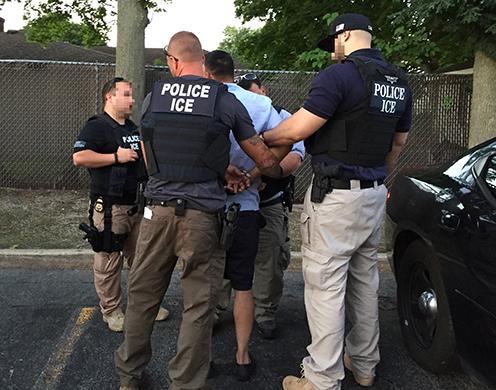
ERO Officers arrest 32 convicted sexual predators during a 10-day period in an enforcement effort dubbed Operation SOAR.
ICE captures most wanted fugitive and child predator in Louisiana
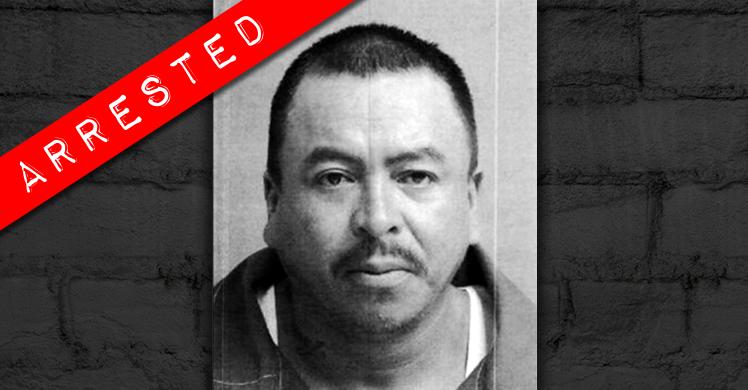
ERO arrests Jose Melchor Martinez, a fugitive on ICE’s Most Wanted list during a targeted operation in Central Louisiana. Martinez was convicted of taking indecent liberties with a child in 2002 and removed from the U.S. to Mexico, but he reentered the country without inspection or parole.
ICE and the Caribbean Corridor Strike Force seize 2,325 pounds of cocaine in Puerto Rico
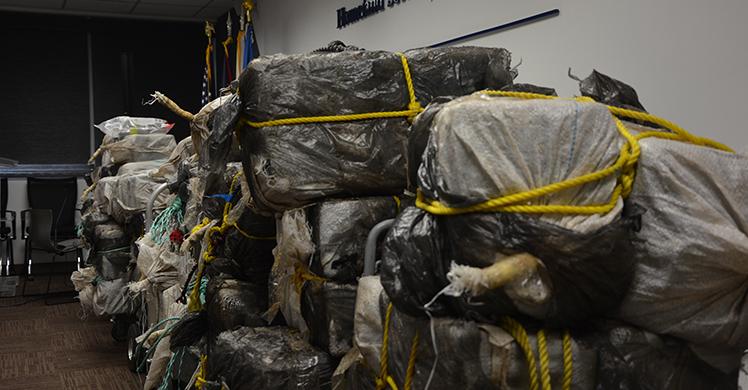
HSI and the CCSF seize 2,325 pounds of cocaine with an estimated street value of $29.6 million from a go-fast vessel, marking one of the largest seizures of the year. A go-fast vessel is a small, fast power boat that is preferred by smugglers.
2019

January: HSI's IPR Center and its partners seize more than $24 million in fake sports-related merchandise
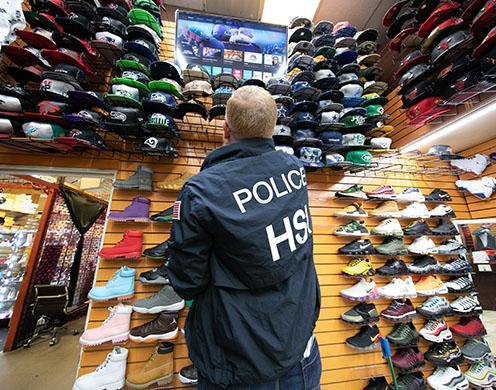
HSI and CBP seize nearly 285,000 counterfeit sports-related items worth an estimated $24.2 million, and related investigations lead to 28 arrests with 21 convictions.
February 12: Joaquin "El Chapo" Guzman is convicted on all charges in U.S. Court
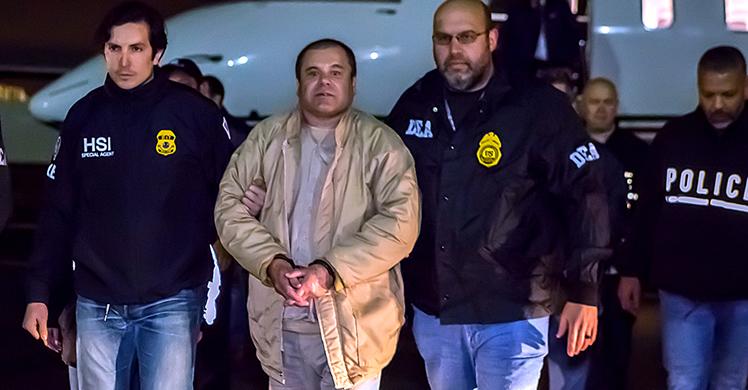
A federal jury in Brooklyn convicts Sinaloa Cartel boss Joaquin Archivaldo Guzman Loera, also known as El Chapo and El Rapido, of being a principal leader of a continuing criminal enterprise, a count that includes 26 drug-related violations and one murder conspiracy, through his leadership of the Mexican organized crime syndicate. The verdict follows a 12-week trial in U.S. District Court.
May 23: Homeland Security Investigations, Thailand Department of Special Investigation, Australian Federal Police and INTERPOL announce results of international child exploitation investigation
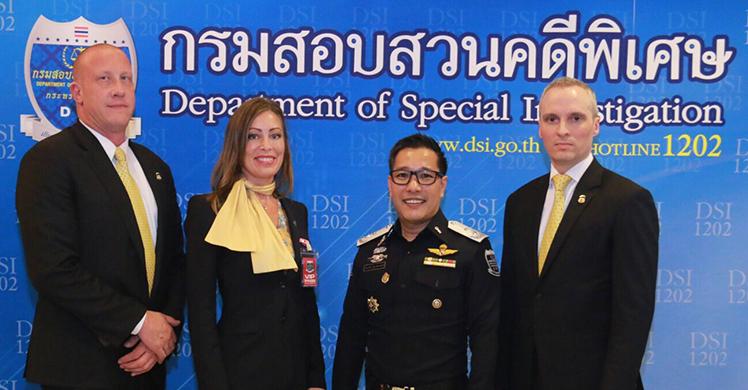
During a joint press conference, HSI announces the rescues of five children under Operation Blackwrist, named after a bracelet worn by one of the victims. Interpol launched the investigation in 2017 following the discovery of material depicting the abuse of 11 boys, all under 13 years old.
August: HSI investigation leads to arms trafficker being sentenced to 30 years in prison
A federal judge sentences black-market arms dealer Rami Najm Asad-Ghanem to 30 years in prison following an HSI investigation. Ghanem conspired to transfer surface-to-air missile systems to customers around the world, including clients in Libya, the United Arab Emirates, Iraq and Hezbollah leadership.
November: HSI Tampa supports area schools during Great American Teach-In
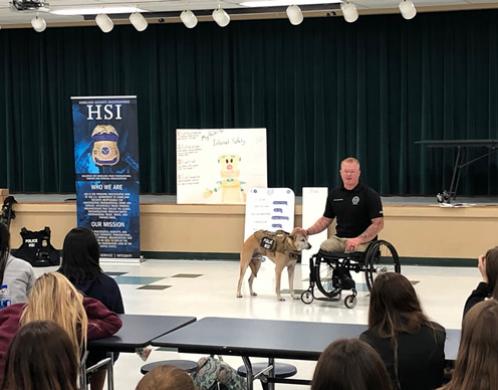
HSI participates in Tampa’s Great American Teach-In by sharing information on the directorate’s role in the community.
2020

February: Federal judge sentences Georgia man for transporting drugs disguised as children's candy

A federal judge sentences Cleveland James McKinney to 151 months in federal prison for illegally transporting 41.97 kilograms of 100% pure methamphetamine and 4.5 kilograms of heroin concealed in what appeared to be shrink-wrapped, bulk packaged children’s candy.
March: ICE shifts enforcement posture in response to COVID-19 pandemic
ICE shifts its priorities in the face of the COVID-19 pandemic, citing its highest priorities as promoting life-saving and public safety activities. The agency says that ERO will focus enforcement on public safety risks and individuals subject to mandatory detention based on criminal grounds, and HSI will continue to carry out mission critical criminal investigations and enforcement operations as determined necessary to maintain public safety and national security.
April: HSI launches online resource page to combat COVID-19 fraud

HSI launches its Operation Stolen Promise webpage to provide the public with information on COVID-19-related fraud schemes. Its S.T.O.P. COVID-19 fraud campaign, a key public outreach component of Operation Stolen Promise, provides facts and tips and guides the public on how to recognize potential fraud, protect themselves and report tips to authorities.
August: HSI Fresno catches 34 online predators in Operation Covid Chatdown
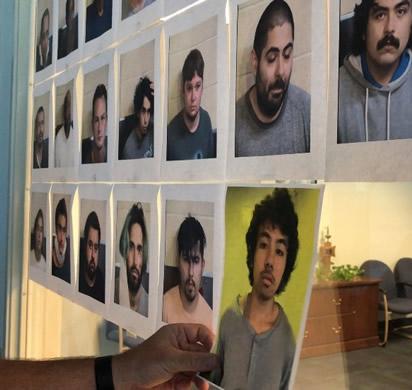
Operation Covid Chatdown results in 34 men being arrested in Fresno, California, for soliciting sexual acts from people they believed were 12- or 13-year-old children. The men traveled by foot, skateboard, bike and vehicle to meet the children, who turned out to be law enforcement operatives with badges, guns and handcuffs. Several arrested individuals admit to victimizing real children during previous attempts.
October: DHS launches the Center for Countering Human Trafficking

DHS launches the Center for Countering Human Trafficking, led by HSI, to capitalize on HSI’s operational expertise in human trafficking and forced labor fraud investigations while utilizing a whole-of-government approach to combating these crimes. The CCHT’s aim is to enhance investigations, reach out to the public, support victim assistance programs, provide specialized training and grow partnerships.
2021

February: ERO removes war criminal Friedrich Karl Berger

ERO officers remove 95-year-old Friedrich Karl Berger to Germany. Berger, a German citizen, participated in Nazi-sponsored persecution while serving as an armed guard of concentration camp prisoners in the Neuengamme concentration camp system. A judge ordered Berger removed following an HSI and Human Rights Violators and War Crimes Center investigation.
ICE repatriates antiquities to Thailand, Iraq and Mali

ICE, working with the U.S. Department of State, returns two ancient Thai lintels to Thailand in June; returns stolen ancient artifacts to Iraq in September; and repatriates a trove of stolen artifacts to the Republic of Mali in November. ICE investigations this year also led to the first-of-its-kind lifetime ban on acquiring antiquities for one of the world’s largest ancient art collectors.
November: 23 vets graduate the HERO Corps Program

23 military veterans graduate from the 11th ICE HERO Corps internship program, the first class since the COVID-19 pandemic began. The program recruits, trains and hires wounded, ill or injured transitioning active-duty service members and military veterans for employment as computer forensic analysts to combat child exploitation.
HSI and its partners protect Americans through Operation Stolen Promise

Through Operation Stolen Promise, HSI and federal partners continue to disrupt fraudulent COVID-19-related vaccines and treatments, personal protective equipment, small business loans, unemployment claims and other criminal activity aimed at siphoning benefits from Americans who need them. Through the end of 2021, ICE removes 53 websites related to vaccine fraud and seizes $58.6 million in proceeds tied to COVID-19 fraud.
Operation SOAR

ERO arrests 495 sex offenders during June, July and August, a significant increase of the 194 arrests it made during the same period the previous year, as part of Operation Sex Offender Arrest and Removal, or SOAR. Approximately 80% of the 495 arrests were for crimes against children. The foreign-born sex offender enforcement operation builds on ICE’s ongoing efforts to target and remove these criminal noncitizens from American communities.
2022

ERO and HSI provide Southwest Border Mission Support
ERO details approximately 1,000 personnel to the Southwest Border, providing air and ground transportation, deploying logistical support to border operations, and helping handle some of the more than 2.2 million cases encountered at the border during the year. HSI also dedicates significant resources, deploying 600 special agents to the Southwest Border and 300 more to international locations as part of Operation Expanded Impact. These efforts result in more than 790 disruptions to illicit activity, 14,000 noncitizen apprehensions, 1,900 criminal arrests and the seizure of $5 million in assets and property.
ERO and HSI arrest tens of thousands of suspects
ERO arrests 46,396 noncitizens with criminal histories; those arrested had an average of 4.3 charges and convictions per individual, including more than 20,000 charges or convictions for assault, 5,500 for weapons offenses, 1,500 for homicide-related offenses, and 1,100 for kidnapping.
HSI arrests 36,685 criminal suspects and obtains 13,248 convictions. Its Transnational Criminal Investigative Units make 3,800 criminal arrests, and the directorate sets a record for seized currency and assets, increasing seizures from $1 billion in FY 2021 to more than $5 billion in FY 2022. This increase is driven in large part by financial crimes involving cryptocurrency.
HSI leads two task forces with international impact
HSI serves as co-lead on the White House-mandated Department of Justice KleptoCapture Task Force and the multilateral Russian Elites, Proxies and Oligarchs Task Force, neutralizing enablers of Russian government operations by identifying and disrupting their financial and logistical infrastructure.
HSI obtains extradition of presidential assassins
HSI helps obtain the extradition of three individuals tied to the assassination of Haitian President Jovenel Moïse through Operation Vested Interest.
ERO removes fugitives and others with final orders of removal to their home countries
ERO helps return individuals with final orders of removal to more than 150 countries, including 44,096 people who had charges or convictions for criminal activity; 2,667 known or suspected gang members; 55 known or suspected terrorists; and seven human rights violators. Among those ERO removes are 74 foreign fugitives wanted by their governments for crimes including homicide, rape, terrorism and kidnapping.
HSI combats the U.S. opioid epidemic by taking 1.8 million pounds of narcotics off the streets

HSI seizes more than 1.8 million pounds of narcotics during FY 2022 while attacking the TCOs responsible for this ongoing public health crisis from all angles: shutting down dark web vendors, denying cartels the firearms and illicit proceeds that facilitate their operations, and collaborating with law enforcement partners across the United States and around the world to dismantle the criminal networks fueling the epidemic.
ICE increases new-hire rate for women deportation officers and special agents
ICE increases its new-hire rate for women deportation officers within ERO from 6% in FY 2021 to 25% in FY 2022, and its new-hire rate for women special agents within HSI from 18% to 44%. It participates in DHS’ 30x23 initiative, which aims to increase women in law enforcement recruit classes to 30% by 2023.
ICE implements pilot program for body worn cameras
ICE complies with Executive Order 14074 by implementing a pilot program for body worn cameras, a critical step toward transparency and accountability.